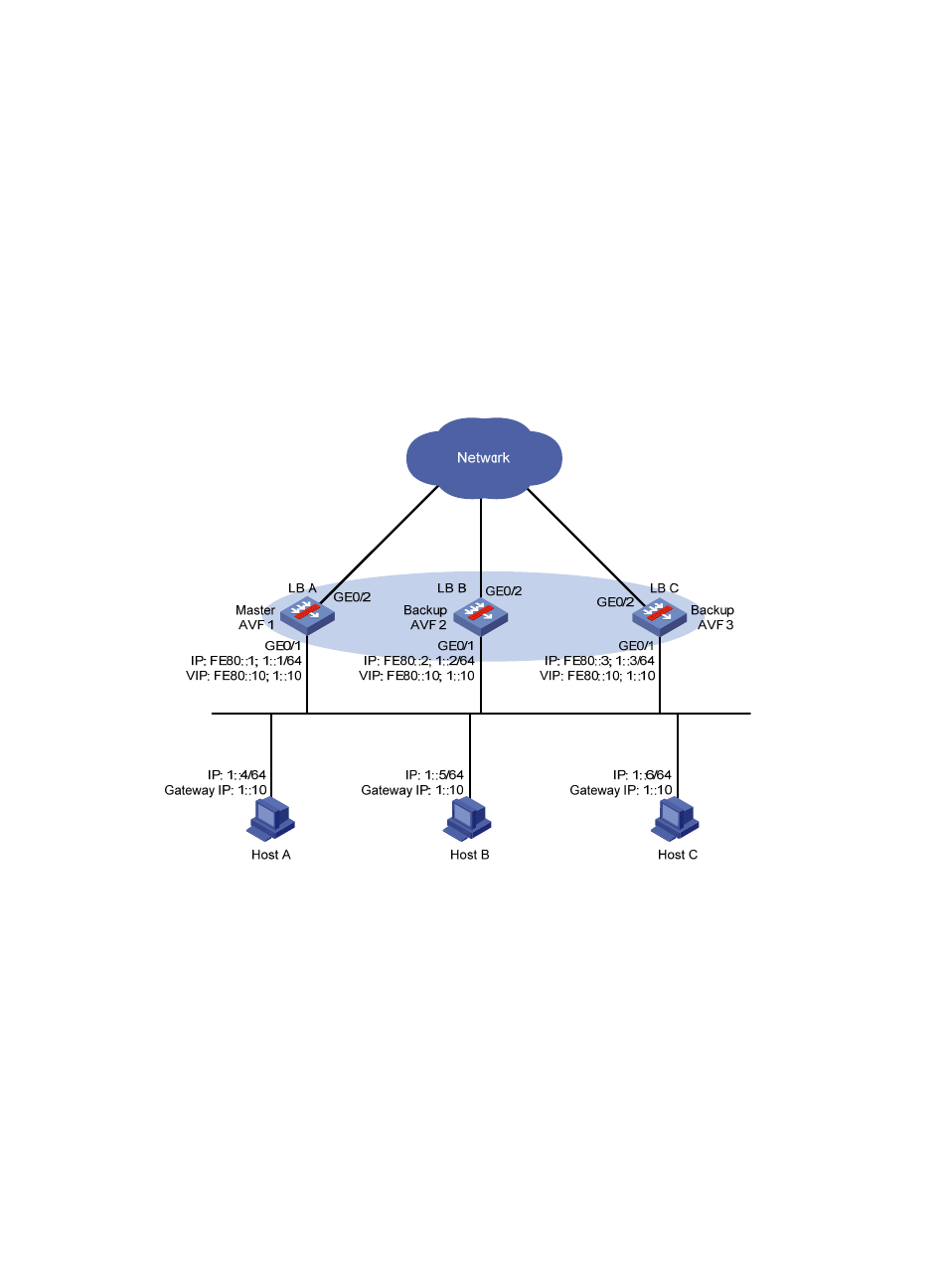Vrrp load balancing mode configuration example, Network requirements, Configuration procedure – H3C Technologies H3C SecBlade LB Cards User Manual
Page 72

64
VRRP load balancing mode configuration example
Network requirements
•
LB A, LB B, and LB C belong to VRRP group 1 with the virtual IPv6 addresses of FE80::10 and 1::10.
•
Hosts on network segment 1::/64 learn FE80::10 as their default gateway through RA messages
sent by the routers. Configure the VRRP group to make sure that when a gateway (LB A, LB B, or LB
C) fails, the hosts on the LAN can access external networks through another gateway.
•
VRRP group 1 operates in load balancing mode to make good use of network resources.
•
Configure a track entry on LB A, LB B, and LB C to monitor their own GigabitEthernet 0/2. When
the interface on LB A, LB B, or LB C fails, the weight of the corresponding router decreases so that
another router with a higher weight can take over.
Figure 32 Network diagram
Configuration procedure
1.
Configure LB A:
# Configure VRRP to operate in load balancing mode.
[LBA] vrrp mode load-balance
# Create VRRP group 1 and configure its virtual IPv6 addresses as FE80::10 and 1::10.
[LBA] interface gigabitethernet0/1
[LBA-GigabitEthernet0/1] ipv6 address fe80::1 link-local
[LBA-GigabitEthernet0/1] ipv6 address 1::1 64
[LBA-GigabitEthernet0/1] vrrp ipv6 vrid 1 virtual-ip fe80::10 link-local
[LBA-GigabitEthernet0/1] vrrp ipv6 vrid 1 virtual-ip 1::10
